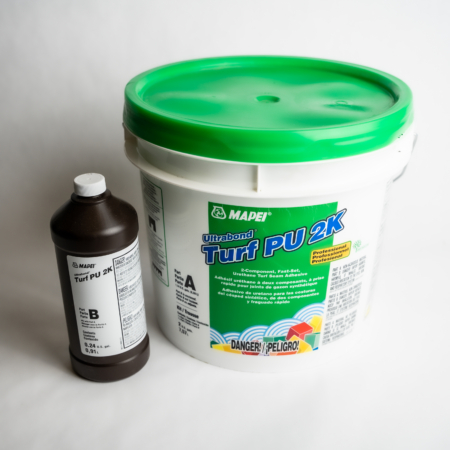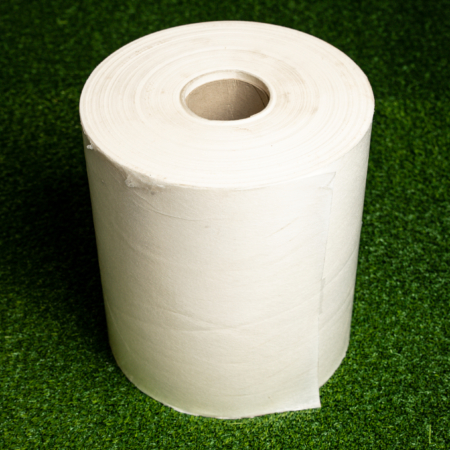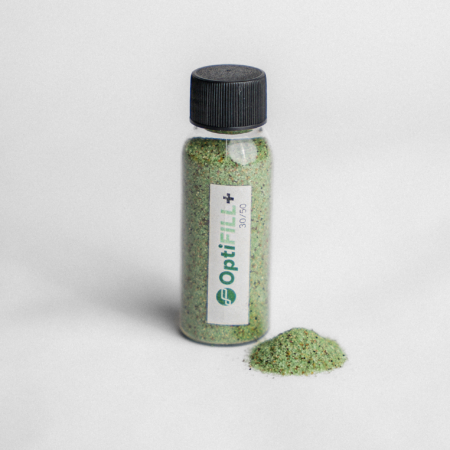How much does it cost to have artificial grass installed?
In recent years, artificial grass has surged in popularity as a low-maintenance, eco-friendly alternative to traditional lawns. Homeowners are increasingly turning to artificial turf for its aesthetic appeal and cost-effective, long-term benefits. Understanding the installation costs, particularly the national averages and those specific to states like Colorado, is crucial for making an informed decision regarding this landscaping option.
We built this calculator to give you a rough idea of what it may cost to install artificial grass in your yard, school, or business. Keep in mind though, each situation is unique and the cost of materials is constantly changing. As such, THIS CALCULATOR IS ONLY A ROUGH ESTIMATE. FOR A MORE SPECIFIC ESTIMATE FOR YOUR PROJECT, PLEASE USE THIS FORM.
Total 0
The Most Important Factors in Determining the Cost of Your Artificial Grass Project
1. The Size of Your Yard
No surprises here, the single most important factor in determining the cost of your artificial grass project is the size of your yard. The bigger the yard, the more expensive the project. That’s while you’ll often see installers quote a project on a per-square-foot basis. Typically that figure will include:
-
- The removal of your current yard (or lack thereof)
- Any dirt work necessary to level the area
- Any irrigation needs that need to be considered like french drains or the capping/removal of sprinkler systems
- The base layer of crushed granite to smooth the surface and provide for ample drainage
- Weed barrier
- Your choice of artificial grass
- Silica sand to weigh down the turf and encourage the fibers to stand up
- Necessary/optional infills to improve the cleanliness, comfort, and durability of your new turf.
2. The Shape of Your Yard
Beyond the simple square footage of your yard, you also need to consider its shape. As we explain in more detail on our How to Buy Artificial Turf page, artificial turf is manufactured and sold in 15-foot wide rolls. As such it is sold per linear foot, meaning 15 feet by 1 foot wide sections.
Turf also has a grain, which means that once the primary strip has been laid, the rest of the yard needs to be installed parallel to it. Excess pieces can’t be rotated as they’ll look odd compared to the rest of the yard.
In short, the ideal yard is 15 feet wide by however many feet long.
A less-than-ideal yard is one that 17 feet wide by however many feet long.
In this situation, you’ve effectively doubled the cost of your artificial grass to cover those two extra additional feet. In situations like these, we recommend modifying your design to include some rock, mulch, or other elements to fill those two feet and prevent having to purchase an additional roll.
3. The Condition of Your Yard
The condition of your yard can dramatically affect the price of the project. But having a crummy yard may actually be a good thing! Remember, before we can install turf we need to get the surface clean(ish) and properly sloped. Then we can add on the layer of crushed granite.
This means a bare yard is actually a benefit, as it reduces the time we need to spend getting the yard ready. On the other hand, a yard with thick, well-established sod usually takes more time for us to remove.
Other obstacles like rocks, trees, landscaping, trash, or even pet waste increases the cost of your project.
4. The Accessibility of Your Yard
Installing turf is a difficult endeavor, made only more difficult by an inaccessible yard. Remember, turf is manufactured and sold in 15-foot-wide rolls with lengths up to 100 feet. That’s a total of about 1,000 pounds per roll!
Thankfully, we’re one of the few installers in Colorado with the equipment to properly cut these lengths to the appropriate size for your project, minimizing waste and the amount of labor necessary to get the material into your yard.
We typically bring in 1 ton of base material per 100 sqft. and another 2 pounds of sand and infill per square foot. For those keeping track, that’s a lot of heavy material.
If your yard isn’t accessible for machinery, we may need to bring this material in by hand. Of course this will affect the final cost and time to complete the installation.
Comparing Costs: Artificial Grass vs. Natural Lawn Maintenance
While the initial cost of installing artificial turf might seem higher than that of maintaining a natural lawn, the long-term savings and minimal maintenance requirements often make it a more economical choice. Understanding the factors influencing installation costs and comparing them to the ongoing expenses of maintaining a natural lawn can assist homeowners in making a well-informed decision that aligns with their budget and preferences.
National and Colorado Averages for Artificial Grass Installation
According to data from HomeAdvisor, the national average cost for installing artificial grass in residential areas ranges between $2,000 and $8,000 depending in large part on the size of the project. The typical homeowner spends around $6,250 for a 500-square-foot artificial turf installation. In Colorado, similar averages range from $2,000 to $9,000, accounting for variations based on factors like area size, turf quality, and installation complexity within the state. Most turnkey installs range from $10-$20 per square foot.
Avg. Cost of Installation Nationwide (500 sqft.)
Avg. Cost of Installation in Colorado (500 sqft.)
National and Colorado Estimates for Natural Lawn Maintenance
In terms of maintaining a natural lawn, the costs can add up significantly. Annual maintenance for an average-sized residential lawn in Colorado may involve:
Lawn Mowing: Approximately $1,440 per year for bi-weekly mowing at an average cost of $60 per visit.
Fertilization and Weed Control: Around $450 annually for treatments.
Aeration: Roughly $150 for one or two annual sessions.
Overseeding: An estimated $200 for an annual overseeding service.
Pest Control: Approximately $235 for one or two treatments per year.
Watering and Irrigation: Additional water costs averaging around $400 per year for the lawn.
The total estimated annual cost for maintaining an average-sized residential lawn in Colorado could range from $1,600 to $3,300, considering these various services.
| Services/Costs | Artificial Grass | Traditional Grass |
|---|---|---|
| Installation | $6,250 (national average for 500 sqft.) | $750 ($1.50 per sqft.) |
| Lawn Mowing | N/A | $1,440 (2x/mo @ $60 per visit) |
| Fertilization & Weed Control | N/A | $450 |
| Aeration | N/A | $150 |
| Overseeding | N/A | $200 |
| Pest Control | N/A | $235 |
| Watering & Irrigation | N/A | $400 |
| Total | $6,250 for the first 10 years | $3,625 for the first year, an additional $2,875 per year thereafter |
Based on data from Home Advisor using the low end figure, they estimate that the breakeven point for an artificial yard vs. a sod yard to be approximately 7 years. This assumes an average install cost of $750, and a very low annual maintenance cost of $850.
These figures serve as approximations and may vary based on factors such as lawn size, specific service requirements, regional pricing, and individual service provider costs. Seeking quotes from local lawn care professionals will offer a more accurate estimate tailored to the specific needs of the lawn.
While the upfront cost of artificial grass installation for residential homes may seem higher than that of natural lawns, the long-term savings and minimal maintenance requirements often make it a more economical choice. Understanding the factors influencing installation costs and comparing them to the ongoing expenses of maintaining a natural lawn can assist homeowners in making a well-informed decision that aligns with their budget and preferences.
Thinking About DIY?
Many of our customers consider the do-it-yourself route when planning their installation. The good news is that we offer all the necessary supplies for your installation and can cut and deliver your turf right to your home in and around Denver!
The bad news is that turf can be very laborious and tricky to install, especially putting greens. But for those with the gumption and lower back strength, we’re happy to provide you with the materials and offer our knowledge and support to guide you through the project.
Final Thoughts
Installing artificial grass can be a major investment in not only your home, but your quality of life. Though it can appear to be an expensive option when compared to traditional sod, the long-term savings typically outweigh the upfront cost. nt.
Here are some considerations regarding the effect of artificial turf on home value:
- Curb Appeal: Artificial turf can enhance the overall aesthetics of a property. A well-maintained and visually appealing lawn, whether natural or artificial, can attract potential buyers and contribute positively to the curb appeal of the home.
- Low Maintenance Appeal: One of the significant advantages of artificial turf is its low maintenance nature. Homebuyers looking for properties with low upkeep requirements may find artificial turf appealing due to reduced maintenance costs and time compared to natural lawns.
- Long-Term Savings: Artificial turf’s durability and longevity can be an attractive feature for homebuyers. Knowing that they won’t have to invest in ongoing lawn maintenance might be a selling point for potential buyers.
- Regional Considerations: In regions like Colorado where water conservation is a concern, artificial turf can be a valuable asset. Areas with drought restrictions or water shortages may see increased interest in homes with artificial lawns due to their water-saving properties.
- Market Perception: The perceived value of artificial turf can vary among different markets and demographics. Some buyers might prefer the natural look and feel of real grass, while others prioritize low-maintenance landscaping solutions.
In general, while artificial turf can enhance a property’s attractiveness and potentially contribute positively to its value, the exact impact on home value can vary case by case. Factors such as the quality of installation, the surrounding landscaping, the local real estate market, and buyer preferences all play a role in determining how much value artificial turf adds to a specific property.
So if you’re thinking about installing artificial turf in your yard, school, or business, don’t hesitate to request a complimentary on-site estimate. Our team of experts will schedule a time to visit your property, discuss your needs and wants, review our available turfs and provide you with samples. We look forward to hearing from you soon!











